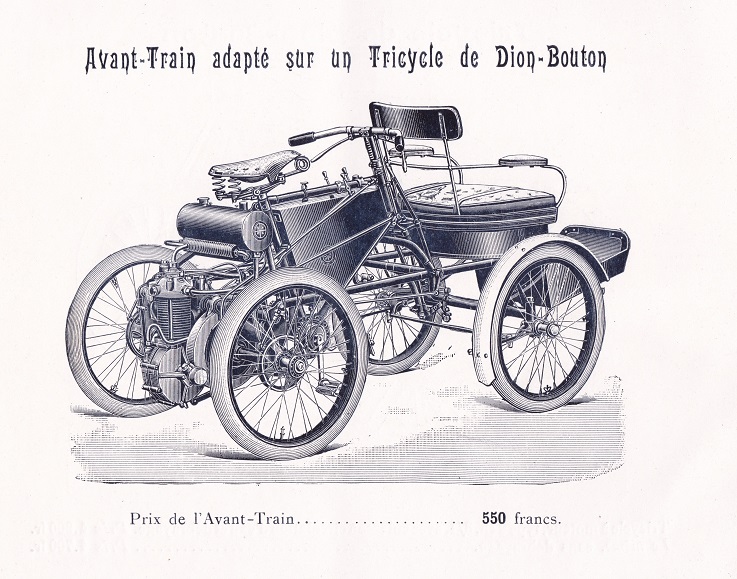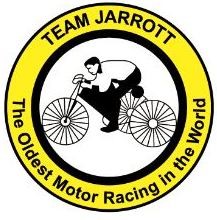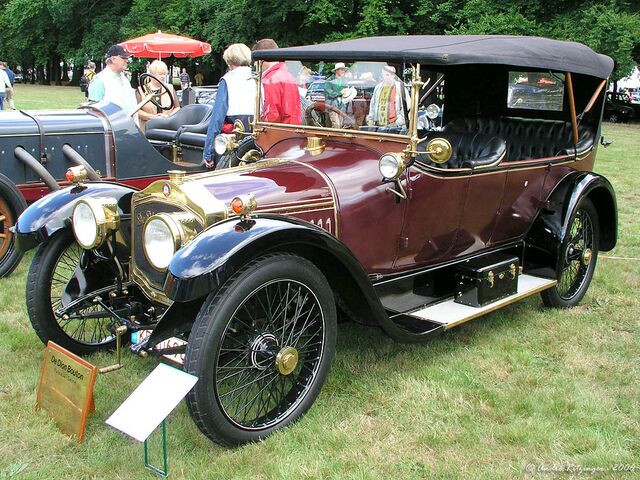The partnership between the Count de Dion, Georges Bouton and Charles Trépardoux was forged following a well-documented chance encounter in the summer of 1882 in a small workshop in Clignancourt, Paris. The business the three individuals were involved in continued to be referred to as Trépardoux et Cie for a number of years, although it was De Dion, Bouton & Trépardoux that was granted patents from February 1883, and also on May 1, 1883 for a steam generator. Borgeson has suggested that the Count’s personal rift with his father, who disapproved of his involvement in motor vehicles, may have been the reason for the maintenance of the Trépardoux et Cie name. Later in 1883 a steam-driven road vehicle was assembled and tested. In the ensuing years the company continued to develop various concepts, some reflecting an interest in the production of a lightweight passenger vehicle and others centred on very substantial steam locomotives, ranging from two-to four-man carriages weighing 1,100kg to an 18-seat omnibus weighing 6,000kg and priced at FFr15,000.
Early in 1887, Trépardoux et Cie returned to the idea of a three-wheeled vehicle, with a single driving wheel to the rear and two front wheels with Ackermann steering. The following year was an important one for the company: for the first time, it is openly referred to as ‘De Dion, Bouton et Trépardoux’; a printed catalogue appeared providing details of the latest ‘De Dion’ steam boiler, and a steam-driven tricycle entered full production. Le Vélocipède organised an event during the year, in which Georges Bouton was able to show a Serpollet steamer a clean pair of heels and win the event in one of these vehicles.
In October of 1889, the company F. Mérelle, in association with De Dion, Bouton et Trépardoux, produced a catalogue of vehicles on offer, significant because it was the first one to be produced featuring a range of tricycles and quadricycles, along with a selection of engines that could be purchased separately. The company also turned its attention to a range of tractor and trailer combinations.
Shortly after the steam-driven tricycles and quadricycles went into full production in 1889, the Count had established a working partnership with an engineer named Delalande, based at 103 Rue Saint-Maurin, Paris, with the intention of developing an internal combustion engine. The result was two engines of radial design, for which patents were sought, and which looked remarkably similar to those engines used in early aircraft; the cylinders were laid out like the spokes of a wheel and rotated around a fixed crankshaft. There is no indication that these engines were progressed beyond the development stage or installed in any vehicles. What is also clear though is that from the early 1890s some experiments with internal combustion engines were being conducted by Georges Bouton, to the increasing consternation of Trépardoux, who was still firmly convinced that steam propulsion was the only option worth pursuing.

Charles Trépardoux left the company he had originally launched with his brother-in-law, Georges Bouton in December 1893, entering a partnership with F. Mérelle, the distributor who had been largely responsible for marketing the early steam-driven tricycles and quadricycles his company had produced. From 1894, the focus of the efforts of the remaining partners, the Count de Dion and Bouton, was on the production of petrol-fuelled internal combustion engines. Trépardoux was to play no part in this development of the business, but he did, however, have an influence on the first tricycles and the voiturettes in that he had conducted the early work on the front and rear axles, wheel bearings, and transmissions, which made these early vehicles so distinctive and successful.
The first tricycles were produced in 1895, equipped with engines of modest output of .5hp and with frames that were very similar to those of the conventional pedal tricycles. Between that time and early 1897, the power output was considerably increased, the frame was strengthened, electric ignition replaced the original hot tube version, and a mode of transport evolved that served the racing fraternity as well as those who could afford this desirable and fashionable accessory. At this time, De Dion Bouton developed its approach to engine manufacture that was to be a constant for the bulk of the next decade, where it sold ‘loose’ engines to individuals and companies alike, and in so doing, gave momentum to the early motor industry. Between 1895 and 1902, it has been estimated that the company produced some 50,000 engines, for a multiple of purposes including marine use as well as for stationery machines. As the power output steadily increased, so the number of uses for the engines also escalated; by the turn of the last century, there were 2.75hp and 3.5hp engines available.
In the first few years of the twentieth century the level of technical progress in the construction of motorcars was remarkable, and this is self-evident from a cursory review of the output from the Puteaux works of De Dion Bouton. In September 1899, the company produced its first rear-engined, four-wheeled, twin speed vehicle with a single cylinder engine, an unsprung back axle, no rear brakes, and very limited accommodation. Five years later, in December 1904, a four-cylinder, four forward speed vehicle, fully sprung and capable of carrying limousine coachwork and a full complement of passengers in appreciable comfort over long distances, was available. In the five years that lapsed, the constant flow of technical innovation, and the adoption of individual new components on a continuous basis, led to the presentation of sixteen individual passenger vehicle submissions, in single, twin and four-cylinder configuration, to the Service des Mines for approval.
The initial production voiturette was a 3.5hp rear-engined model, known as the Type ‘D’, which was replaced in 1900 by an upgraded Type ‘E’ version, albeit with the same engine. In November 1900, the Type ‘G1’ appeared with a 4.5hp engine, followed in 1901 by a variant known as the Type ‘G2’. The last rear-engined model was the Type ‘L’, which had an identical chassis to the Type ‘G’ Type but was equipped with the more powerful 6hp engine that the company had initially installed in its front-engined models from November 1901.
The voiturette provided comfort in convivial style for two or more passengers that a tricycle or a quadricycle could not, and it was perfectly capable of long journeys by night or day, added to which it also offered advantages in cost, operation, and maintenance for owner/drivers that vehicles produced by other manufacturers did not. The presence of a light, high-speed petrol engine in a relatively lightweight body influenced many other manufacturers who adopted similar designs for their own vehicles.
By mid-1903 the De Dion Bouton Company was firmly established as a manufacturer of high-quality engines and motor vehicles in Europe. The success of the motor tricycle followed by the launch of the voiturette, prepared the way for the first of the front-engined vehicles that appeared in 1901. Numerous other manufacturers, like Renault, had installed engines bought from Puteaux into their own vehicles, and so De Dion Bouton had played a pivotal role in supporting the nascent car industry. In May 1903, the single cylinder vehicles were joined by the first twin cylinder offerings. This development had not been without its challenges, especially in connection with ignition and engine lubrication, but when the revised twin-cylinder vehicle was launched in December 1903, it was a triumph, attracting considerable positive comment and appreciation from the burgeoning motoring public throughout 1904.
The technical lessons learned in 1903 were to serve the Company well because the range and pace of technical development was set to dramatically accelerate from the end of 1904. In part this was due to the changing competitive environment in Europe: the days of De Dion Bouton hegemony were ending, as American manufacturers, were demonstrating both their manufacturing prowess and their ability to attract customers with keen prices. The Americans overtook the French in the value of their automobile production in 1905 and never looked back. The scale of production in Britain was also growing. In the Europe of 1906, however, French manufacturing still dominated, with 400 French cars being sold in Britain per month, in contrast to the monthly average of two British vehicles sold in France. At the end of 1913 the annual production in Britain was 25,000 cars, whilst in France the output was 45,000 vehicles. By this time Peugeot, Renault, Darracq and Berliet were all producing more passenger vehicles than De Dion Bouton. Many of De Dion Bouton’s innovations with engine design, ignition systems, suspension and speed change mechanisms were well established, reliable and effective, but they were no longer ‘cutting edge’, and the Company was acutely aware of the need to demonstrate a willingness to change, difficult, expensive, and perhaps sometime unnecessary, as that might be. The customer base was changing too; the well-heeled clientele was still a substantial component of the demand, but many municipal authorities were interested in petrol driven vehicles, including the omnibus, and businessmen of all persuasions were keen to capitalize on the commercial opportunities and increased productivity through the usage of motorised trucks.
There were additional challenges facing De Dion Bouton, and every other vehicle manufacturer in France, at the end of 1904; should the focus be on petrol, steam, or electric vehicles, and which option would be best suited to each customer segment? The bulk of the factory’s output comprised of petrol engines, but electric vehicles had been offered since 1900, and by 1903 both the motors and the batteries were being manufactured in Puteaux, whilst steam was the favoured power source for the early trucks. The Marquis de Dion (following the death of his father in 1901) had finely tuned instincts for new opportunities in the marketplace but each one required investment in factory accommodation, people, expertise, machinery, raw materials, and time.
Concerns around the logistic elements of car production and supplier management led De Dion Bouton towards self-sufficiency. The company employed 3,000 staff in 1903, and this number had grown to 4,500 by 1909 as it continued to expand the range of components it made in-house. In addition to the engines, gearboxes, chassis, and suspension, it made its own magnetos, wheels and bodies, and a workforce of 100 women was employed in making spark plugs. Apart from the usual design and construction facilities, the factory had its own chemical laboratory, microscope test-room, tensile and hardness-testing machinery, wood mills, paint shops, trimming department, and foundries.
The enterprise in Puteaux was vast, complex, and extraordinarily expensive to maintain. Whilst the Marquis de Dion was convinced in 1904 that the future prosperity of De Dion Bouton lay in small vehicles and trucks, it did not prevent the company from launching a range of motor buses that became familiar on the streets of Paris, London, and New York from 1906; taxicabs were produced from 1908, and 1909 witnessed the launch of a range of bicycles and the large V8 engine, along with 11 other passenger models.
The health of the De Dion Bouton Company was never as robust after the conflict of 1914-18 as it had been in the years before hostilities commenced. The impact of those four years was catastrophic for many manufacturing businesses, especially in France, and they never recovered. There can be little doubt that in the years leading up to 1914, development and construction in Puteaux were taking place at a feverish pace, not just on passenger vehicles, but on trucks, buses, marine and standing engines. The management team was required to have a critical awareness of the diverse geographical markets they served, understand the competitive environment, deliver products to market, maintain the local technical infrastructure, and secure the various resources necessary, demonstrate good judgement on product development, strengthen the brand and, critically, ensure the capital was in place to fund growth. For any company with an autocratic leader the potential for a poor decision was always high, as was its likely impact. The achievements of the De Dion Bouton Company in this period were considerable, and whilst market share in France, a maturing market, inevitably declined, its overall output, global presence, and reputation, were significantly enhanced, underscoring the performance, resilience and fortitude of the Marquis de Dion and Georges Bouton.
The decline in the company’s fortunes were connected to decisions taken many years previously. Some writers have raised the decision to launch a V-8 engine, an initiative that no other European manufacturer emulated at the time, as a major distraction. This was obviously an expensive undertaking but there were synergistic benefits in connection with aircraft engine production, and very few v-8s vehicles were made. Perhaps the more significant question to be raised is that connected with the decision to reduce the focus on the smaller engined (single and twin cylinder) car production, initially by suspending twin cylinder production in 1908, and then by terminating single cylinder car production entirely in 1912, at a time when their key competitors, Renault in particular, were redoubling their efforts with twin cylinder vehicles for passenger, commercial, and especially taxi usage.
The departure from single cylinder cars certainly removed the De Dion Bouton Company from the competitive melee of that sector, but by 1911/12 the four-cylinder market had its own pressures. American manufacturers typically produced vehicles that provided high torque at low speed, good acceleration and hill-climbing ability, smooth and quiet running, and general docility in traffic. Further, they sold ready-to-drive cars complete with coachwork, tyres, hood, windscreen and lamps, and their scale of production along with their European distribution network, ensured that pricing was always aggressive.
In short, De Dion Bouton had exited a market sector it knew well, where it had an enviable international reputation for its products, and where its competitors were of comparable size, and it chose to focus on the four-cylinder market where others had the advantages of economies of scale, deep pockets, increasing technical proficiency, sophisticated production methods, and global reach. Coupled to this, the combination of an accident-prone twin bearing crankshaft, poor power output and expensive coachwork, encouraged De Dion Bouton customers to look elsewhere from 1912. From 1915 the resources of De Dion Bouton were focused on the war effort, and the French (like the British) government took steps to ensure that American motor car manufacturers did not seize the opportunity to flood the market with their products and disadvantage the long-term position of local producers. From the very start of hostilities in the Autumn of 1914 the Puteaux works, and its resources were substantially dedicated to the French Artillery Construction Department and its role in supporting the war effort, although permission was granted for the company to supply a limited number of vehicles to the public. In December 1914, the company released an information sheet with details of the revised production schedule (above). They were to be five four-cylinder models with live back axles and three V-8s with cardan shafts. Only small variations were proposed on the 1914 designs, although Warland dual rims were to be adopted for all models. The company expected to be able to launch a new 12hp model early in 1915 and a 20hp special speed model for light two-seater and four-seater bodies. The intention was to fit the 10hp model with a revised, pointed radiator and upgrade the rear suspension, but all other Types were to remain substantially the same.
During 1915, the French government rescinded this permission, and the factory was entirely devoted to the production of war material. It is no coincidence that for the first eighteen months of the war, significant numbers of completed vehicles were shipped to both the United States of America and Australia to maintain some commercial momentum. The management in Puteaux had a clear perspective on the differing requirements of these two geographical regions: the number of extant four cylinder vehicles in Australia attests to the scale of export to that region, whilst the brochures produced for the US market are overwhelmingly dedicated to the eight cylinder vehicles, with power outputs ranging from 20hp to 100hp.
When the French War Ministry returned the production facilities in Puteaux to De Dion Bouton in 1919, the two stalwarts who had dedicated so much of their lives to the launch of the popular motor car and the establishment of the industry in France, must have realised that their historic achievements would count for little as they confronted the challenges of the new competitive landscape. Early in 1919, the factory was ready to resume vehicle production and a card was sent to faithful customers, suppliers, and sales agents, informing them that four new types would be available, two with four-cylinder engines, and two with eight-cylinder power units; each engine was a new bore and stroke configuration. There was stubborn resistance to reviving any of the smaller-engined pre-war vehicles, and only one Type, the IC, had an engine of less than three litres capacity. The company had been buoyed by the success of its eight-cylinder engines during the conflict, when they had performed admirably as staff cars and for the basis of armoured vehicles.
The company struggled during the 1920’s to maintain a strong foothold in any sector of the French market, as potential purchasers had the option to buy any number of ‘built to a price’ models or, at the other extreme, lavish concoctions from various carrossiers. De Dion Bouton models were well built and relatively expensive, especially when compared with American imports, but they did not have the cache of the prominent manufacturers either. Makes like Hispano-Suiza and Delauney Belleville fared no better. Production on any scale in Puteaux had ceased by the end of 1931.
Information for this section has been extracted from three publications:
- De Dion Bouton, An Illustrated Guide to Type & Specification 1899-1904, Michael Edwards, Surrenden Press, 2016.
- De Dion Bouton, An Illustrated Guide to Type & Specification 1905-1914, Michael Edwards, Surrenden Press, 2017.
- De Dion Bouton: The Essential Library & Source Book, Michael Edwards, Surrenden Press, 2020



